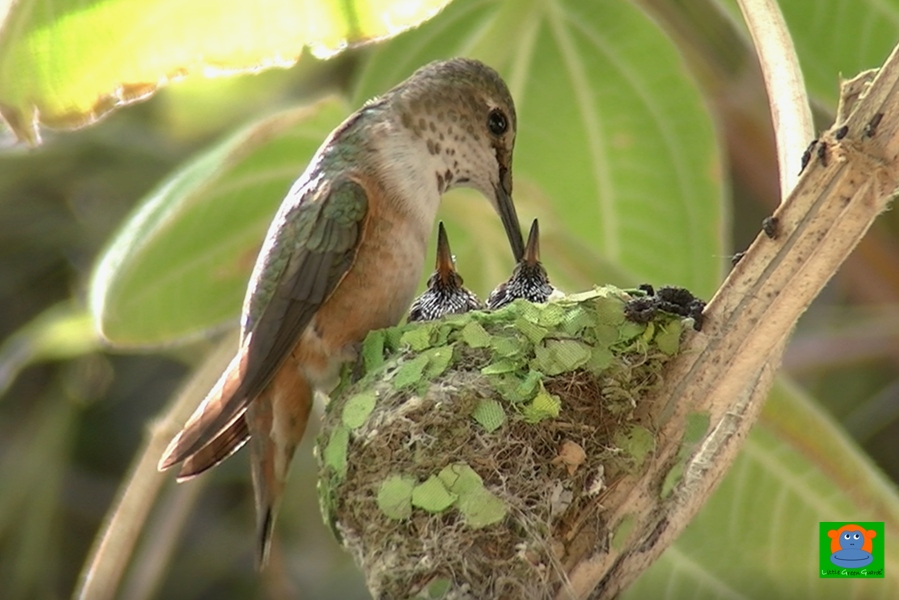Written by Dr. J. “Andy” Phillips, President, LVDI International
If you are curious enough and know where to look you will be amazed by the wonders of nature all around.
Early in February I discovered a female Allen’s hummingbird (Selasphorous sasin) building a small cup-shaped nest in a shrub in my backyard. She collected various items: small twigs, bits of plant fiber and even pieces of polyester cloth, and like a skilled builder she weaved everything together with the silk from spider webs.
How interesting! I decided that I would do a C.S.I. project to show our Little Green Guards® how easily hummingbird nesting activity could be documented using still photography and video.
On Valentine’s Day the female laid two eggs. Each egg was about the size of a jelly bean. She then sat on her eggs for the next 15 days until they hatched on March 1st. Her hatchlings were born without feathers, had dark skin, and their eyes were closed. To keep her nest clean and tidy, the mother meticulously removed all the broken eggshells from the nest.

Because she was the only parent who cared for them, she had to find nectar and catch small insects that she would feed to the waiting nestlings, sometimes every 20 minutes. Within days the chicks could tell when their mother was approaching and would lift their heads up and open their mouths to be fed. The mother would then insert her beak into each chick’s mouth and regurgitate the insect and nectar mixture into their throat. Check out the video below!
Within 10 days from hatching the beak of the babies began to darken; their body was now covered with pinfeathers and their eyes had begun to open.

Over the next week the chicks tested out their wings more and more each day in preparation for flight. Then on March 28th, only 27 days after hatching, the first chick flew away. The second chick left the nest the next day. Both fledglings never returned to the nest though I could see the mother still feeding her kids over the next three days.
This C.S.I. project took me about one hour a day to document the hummingbird’s developmental milestones. Besides taking photographs and videos, I also jotted down notes such as how many days did it take before the chicks’ eyes opened and how many days did it take for the chicks to fledge. If I had spent more time each day gathering information I could have determined things like parental care by calculating how many times per hour the mother needed to feed her chicks and did that number change as the chick grew.
The possibilities of C.S.I. projects are boundless. With help from our mentors any child can learn about the entire process of conducting a scientific research project – one that we will tailor to his or her interest.
We welcome your participation. For further information about the C.S.I. program, please send your inquiry by email: info@lvdiinternational.org.
